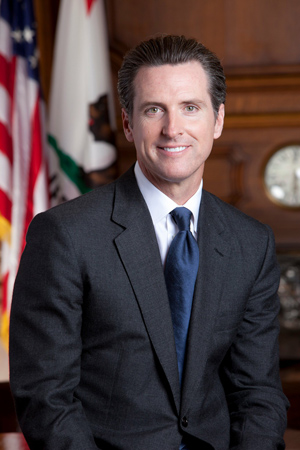As California prepares for an influx of people seeking abortion care, Governor Newsom’s proposal would provide new investments in reproductive health facilities, remove barriers to services, help cover costs of uninsured patients, and more
Incentives for businesses to relocate and bring jobs to California from anti-abortion and anti-LGBTQ+ states
Governor Newsom is committed to working with the Legislature and stakeholders to strengthen protections and expand access
Watch Governor Newsom discuss his proposed Reproductive Health Package here
May 12, 2022 - SACRAMENTO – As the U.S. Supreme Court appears prepared to overturn Roe v. Wade and states throughout the country pass laws to restrict access to  reproductive health care and ban abortions, Governor Gavin Newsom on Wednesday announced a Reproductive Health Package to expand access to these vital services and welcome companies from anti-abortion and anti-LGBTQ+ states. The Newsom Administration continues efforts to maintain and improve availability of safe and accessible reproductive health care services and prepare for a potential influx of people from other states seeking reproductive health care and abortion services.
reproductive health care and ban abortions, Governor Gavin Newsom on Wednesday announced a Reproductive Health Package to expand access to these vital services and welcome companies from anti-abortion and anti-LGBTQ+ states. The Newsom Administration continues efforts to maintain and improve availability of safe and accessible reproductive health care services and prepare for a potential influx of people from other states seeking reproductive health care and abortion services.
“California will not stand idly by as extremists roll back our basic constitutional rights; we’re going to fight like hell, making sure that all women – not just those in California – know that this state continues to recognize and protect their fundamental rights,” said Governor Newsom. “We’re expanding access to these critical services, welcoming businesses and their employees fleeing anti-abortion states, and reaffirming our commitment to continuing to work closely with the Legislature and reproductive rights stakeholders to further solidify California’s leadership on abortion rights.”
Watch Governor Newsom discuss his proposed Reproductive Health Package here.
Governor Newsom’s Reproductive Health Package includes $125 million to further bolster California’s health care infrastructure, expand access to services for patients, and help prepare for the influx of people seeking reproductive health care from other states. Today’s announcement, which adds $57 million to January’s $68 million proposal, includes the following:
- Cover Uncompensated Care for People Uninsured for Abortion Services. $40 million for grants to reproductive health care providers to offset the cost of providing care to low- and moderate-income individuals who do not have health care coverage for abortion care services.
- California Reproductive Justice & Freedom Fund. $15 million for grants to community-based reproductive health, rights, and justice organizations to conduct medically accurate and culturally competent outreach and education on sexual health and reproductive health issues.
- Comprehensive Reproductive Rights Website. $1 million to develop and maintain a website that provides accurate and updated information to the public on the right to abortion under state law, information about reproductive health care providers, and options for coverage for reproductive health services, including state-funded coverage and programs.
- Research on the Unmet Needs for Reproductive Health Care Services. $1 million for research regarding the unmet needs for access to reproductive health care services.
- Invest in Reproductive Health Clinical Infrastructure. To support California’s clinical infrastructure of reproductive health care services, the Blueprint included $20 million to provide scholarships and loan repayments to health care providers that commit to providing reproductive health care services.
- Capital Infrastructure, Improved Security. The Blueprint included $20 million to assist reproductive health care facilities in securing their physical and information technology infrastructure and to enhance facility security.
- Make Reproductive Health Care More Affordable. The Blueprint included $20 million to subsidize the cost of abortion care for Covered California consumers due to federal payment limitations for abortion coverage.
- Remove Barriers for Reproductive Health. To make it easier to get the medical care needed for family planning and reproductive health, the Blueprint removed Medi-Cal requirements for in-person follow-up visits and ultrasounds if not medically necessary.
- Family Planning, Access, Care and Treatment (PACT) HPV Vaccine Coverage. The Blueprint included $8 million to add the human papillomavirus vaccine as a covered benefit under the Family PACT program, effective July 1, 2022.
In addition to these critical investments, Governor Newsom is further investing in California’s values and growing the state’s inclusive economy by proposing incentive opportunities for businesses to relocate to California or grow jobs and their economic footprint here from states with anti-abortion and anti-LGBTQ+ laws. By updating existing business incentive programs to provide additional consideration for companies leaving states that have enacted restrictions on reproductive rights and anti-LGBTQ+ laws, Governor Newsom is welcoming companies that share California’s values and doubling down on the diversity that makes our economy a global leader.
Governor Newsom’s Reproductive Health Package includes proposals championed by members of the California Legislative Women’s Caucus. Today’s announcement builds upon the recent action of Governor Newsom, Senate President pro Tempore Atkins and Assembly Speaker Rendon to advance a constitutional amendment to enshrine the right to an abortion. The Governor has also eliminated out-of-pocket costs for abortion services and signed into law a legislative package to strengthen access and protect patients and providers. And, in October, Governor Newsom announced the Administration’s participation in the California Future of Abortion Council, to collaborate with advocates, policymakers, providers, patients and others on ways to advance the state’s reproductive health leadership.
Source: Office of the Governor
